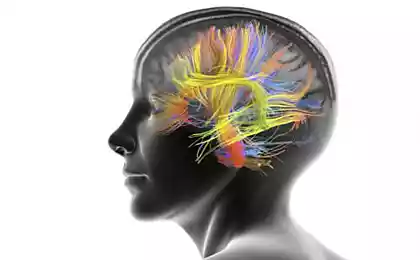537
Tough age—why are teenagers so weird
The word "youth" in our culture is perceived almost the same as "risk", "emotional drama" and is associated with all forms of strange behavior. Until recently it was accepted to explain teenage angst from the point of view of psychology. With the development of young people needs to solve a number of social and emotional problems such as separation from parents, winning a place in the group of peers, and awareness of who they really are. Don't need to be a specialist to understand how disturbing questions.
But still the dark spots in the analysis of adolescence: for example, the sudden surge of anxiety and fear that is experienced by all teenagers and which is not observed neither in children nor in adults. Its cause lies in the peculiarities of development of the brain, and the consequence is the time spent to learn how not to be afraid.

"Behavioral paradox helps to explain why teenagers are so inclined to harm themselves and others. In their world three enemy, accidents, murder and suicide"
Different parts of the brain develop at different rates. It turns out, the area responsible for processing fear, the amygdala, is much ahead in this prefrontal cortex, responsible for reasoning and control. This means that adolescents have a brain, which is endowed with an enhanced ability to experience anxiety and, however, not so good when it comes to complacency and a conscious stop unpleasant thoughts.
You may have a question: since Teens are shy, why are they always looking for new sensations and love the risk? These two statements are in conflict with each other. The answer lies in the fact that the pleasure center, as well as the region responsible for processing fear, develops earlier than the prefrontal cortex. This behavioral paradox helps to explain why teenagers are so inclined to harm themselves and others. In their world three enemy, accidents, murder and suicide.
Of course, most adolescents do not develop neuroses, but on the contrary, he acquires the ability to work with their fears to 25 years the prefrontal cortex fully developed for this. But still up to 20% of teenagers in the US have been diagnosed with a neurosis of fear and suffer panic attacks, what is probably due to the influence from genetic and environmental factors.
The amygdala, or the amygdala, located deep under the crust and sends signals of danger in the prefrontal area even before we could recognise it. Remember that instant burst of adrenaline when walking in the forest, you suddenly seemed to be in the grass crawling snake. That's what makes the amygdala. You again look back to the place of danger, and the prefrontal cortex calms you: it's just a stick.
Schematically, reminiscent of the two-way street: the amygdala increases the level of fear, but after a time, the prefrontal cortex gives us information about how things really are. But Teens these processes do not go as smoothly because they have much worse than it turns out to manage their emotions.
B. J. Upton. Casey, a psychology Professor at Cornell University, studied the fear in the group of children, Teens and adults. The participants were shown a colored square and to include causing fear sounds. Square, before the neutral stimulus, began to be associated with unpleasant sounds, and then evoked the same emotions as the music. In all groups the indicators in this experiment were the same.
Was interesting in another. When Professor Casey coached the participants, the lack of fear stimulus, that is, showed just a colored square, it was found that teenagers no longer able to "unlearn" to experience the same feelings as in the experiment with scary music. Teenagers are much harder, one day, remembering something as unsafe to abandon their beliefs.
Adolescence is a time of research, when young people win greater autonomy, and the growing ability to feel fear and tenacious memory in relation to unsafe situations, help them go through this adaptation period and develop a sense of self-preservation. The difference in the development of the amygdala and the prefrontal cortex were found not only in humans but in all mammals and is classified as an evolutionary achievement. This new, neurobiological, understanding of teenage problems can change our view on the treatment of neurosis.
One of the most common issues today — the cognitive-behavioral psychotherapy, during which the stimulus, which was seen before as a threat, is presented repeatedly in a new, safe, conditions, that trains the patient's ability to experience fear. If you, for example, afraid of spiders, you them step by step will show in different relaxed situations, so you finally got rid of their acarophobia. But the paradox is that adolescents, though in need of therapy because of poor control of negative emotions may be a little receptive to it — for the same reason.
A recent study of adolescents with anxiety disorders found that only 55-60% of them are cured in the course of cognitive-behavioral therapy, or when taking antidepressants, whereas if the methods are combined, that is, except to provide psychological and pharmacological effects, the figure increases to 81%.
Source: theoryandpractice.ru
But still the dark spots in the analysis of adolescence: for example, the sudden surge of anxiety and fear that is experienced by all teenagers and which is not observed neither in children nor in adults. Its cause lies in the peculiarities of development of the brain, and the consequence is the time spent to learn how not to be afraid.

"Behavioral paradox helps to explain why teenagers are so inclined to harm themselves and others. In their world three enemy, accidents, murder and suicide"
Different parts of the brain develop at different rates. It turns out, the area responsible for processing fear, the amygdala, is much ahead in this prefrontal cortex, responsible for reasoning and control. This means that adolescents have a brain, which is endowed with an enhanced ability to experience anxiety and, however, not so good when it comes to complacency and a conscious stop unpleasant thoughts.
You may have a question: since Teens are shy, why are they always looking for new sensations and love the risk? These two statements are in conflict with each other. The answer lies in the fact that the pleasure center, as well as the region responsible for processing fear, develops earlier than the prefrontal cortex. This behavioral paradox helps to explain why teenagers are so inclined to harm themselves and others. In their world three enemy, accidents, murder and suicide.
Of course, most adolescents do not develop neuroses, but on the contrary, he acquires the ability to work with their fears to 25 years the prefrontal cortex fully developed for this. But still up to 20% of teenagers in the US have been diagnosed with a neurosis of fear and suffer panic attacks, what is probably due to the influence from genetic and environmental factors.
The amygdala, or the amygdala, located deep under the crust and sends signals of danger in the prefrontal area even before we could recognise it. Remember that instant burst of adrenaline when walking in the forest, you suddenly seemed to be in the grass crawling snake. That's what makes the amygdala. You again look back to the place of danger, and the prefrontal cortex calms you: it's just a stick.
Schematically, reminiscent of the two-way street: the amygdala increases the level of fear, but after a time, the prefrontal cortex gives us information about how things really are. But Teens these processes do not go as smoothly because they have much worse than it turns out to manage their emotions.
B. J. Upton. Casey, a psychology Professor at Cornell University, studied the fear in the group of children, Teens and adults. The participants were shown a colored square and to include causing fear sounds. Square, before the neutral stimulus, began to be associated with unpleasant sounds, and then evoked the same emotions as the music. In all groups the indicators in this experiment were the same.
Was interesting in another. When Professor Casey coached the participants, the lack of fear stimulus, that is, showed just a colored square, it was found that teenagers no longer able to "unlearn" to experience the same feelings as in the experiment with scary music. Teenagers are much harder, one day, remembering something as unsafe to abandon their beliefs.
Adolescence is a time of research, when young people win greater autonomy, and the growing ability to feel fear and tenacious memory in relation to unsafe situations, help them go through this adaptation period and develop a sense of self-preservation. The difference in the development of the amygdala and the prefrontal cortex were found not only in humans but in all mammals and is classified as an evolutionary achievement. This new, neurobiological, understanding of teenage problems can change our view on the treatment of neurosis.
One of the most common issues today — the cognitive-behavioral psychotherapy, during which the stimulus, which was seen before as a threat, is presented repeatedly in a new, safe, conditions, that trains the patient's ability to experience fear. If you, for example, afraid of spiders, you them step by step will show in different relaxed situations, so you finally got rid of their acarophobia. But the paradox is that adolescents, though in need of therapy because of poor control of negative emotions may be a little receptive to it — for the same reason.
A recent study of adolescents with anxiety disorders found that only 55-60% of them are cured in the course of cognitive-behavioral therapy, or when taking antidepressants, whereas if the methods are combined, that is, except to provide psychological and pharmacological effects, the figure increases to 81%.
Source: theoryandpractice.ru
























